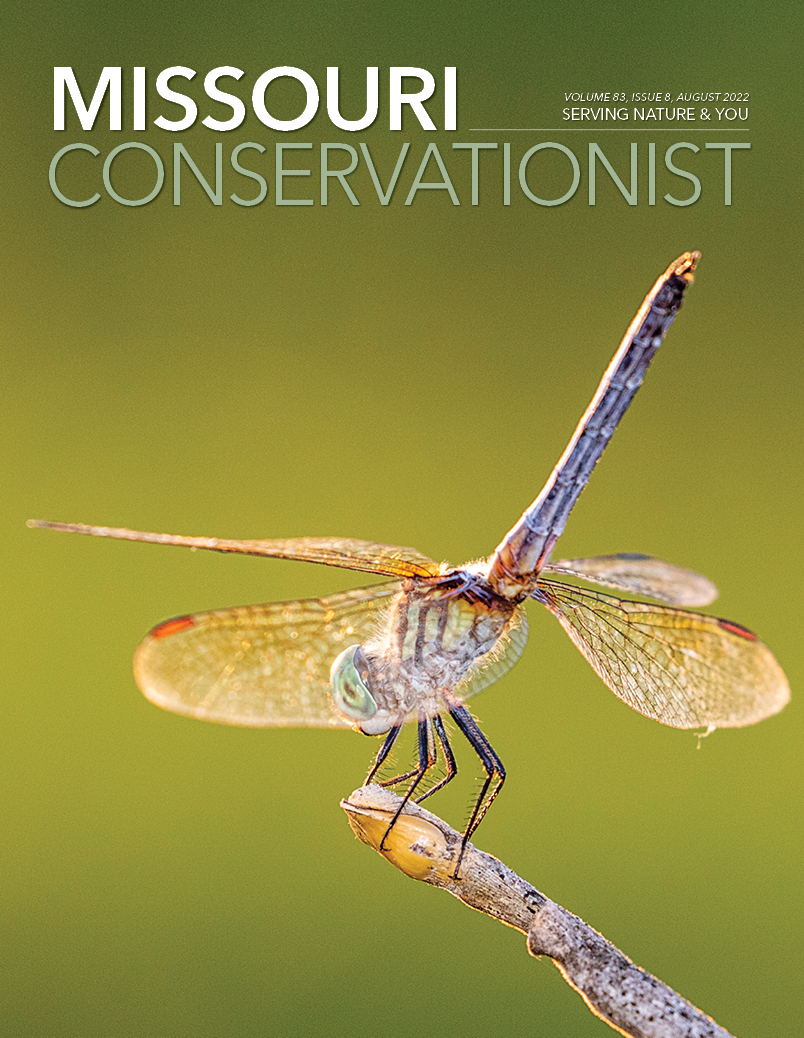Got a question for Ask MDC? Send it to AskMDC@mdc.mo.gov or call 573-522-4115, ext. 3848.
Q: What is this plant?
This Missouri native species is called buttonbush (Cephalanthus occidentalis). Always near water, this plant prefers swamps, sloughs, oxbows, bottomland forests, streambanks, marshes, ponds, and lakes. The seeds are eaten by ducks — especially wood ducks — and pheasants.
A food-plant for bees, hummingbirds, and butterflies, buttonbush can stabilize pond banks and be cultivated as an ornamental. Gardeners can use this plant in woodland gardens, rain gardens, and the edges of ponds. This plant tolerates erosion and wet soil. For more information, visit short.mdc.mo.gov/45F.
Q: I was given a bat house, and I want to put it in a place that’s good for bats but that’s also okay for my neighbors. Any suggestions?
Bats are losing habitat around the world, and a bat box offers them a restful place to sleep.
It’s best to place the bat box either on a building or on a pole. Tree trunks are not good places to mount bat boxes because they leave these small, flying mammals vulnerable to predators like owls, hawks, and snakes. A spot 20 to 30 feet away from the nearest trees is recommended.
The perfect height is about 15 to 20 feet above the ground. Bats find it challenging to take off from a stationary position and need to drop and glide to take flight. A bat house placed on a building beneath the eaves works well because it offers lots of clearance for the bat to glide and it helps moderate the temperatures of the chamber. A rocket box — a four-sided chamber that mimics a tree’s peeling bark — works well on a pole and a traditional bat box with three to four chambers is ideally situated on a building.
In Missouri, the best color to paint your bat box is medium gray. Water-based, exterior-grade paints are preferred, and oil-based paints or stains should be avoided.
Finally, choose a location that receives at least six hours of daily sun exposure and is within a quarter mile of a water source.
For additional tips on how to install a bat house, visit batcon.org/about-bats/bat-houses.
Q: Do groundhogs (woodchucks) begin hibernating suddenly? Or is it a gradual thing?
Woodchucks are true hibernators, but the process is gradual.
As the autumn days shorten and become cooler, woodchucks remain out of their dens for progressively briefer periods of time. The fattest and oldest adults gradually become less active and start to hibernate first. Lean adults and young animals are abroad latest in the fall. By the end of October or mid-November, most woodchucks are curled up asleep in their underground nests.
Woodchucks begin to emerge from hibernation as early as the first week of February, but severe cold may delay them. At first, they come out only for short periods, but as the days warm, they spend a correspondingly longer time above ground.
And More...
This Issue's Staff
Editor - Angie Daly Morfeld
Associate Editor - Larry Archer
Photography Editor - Cliff White
Staff Writer - Kristie Hilgedick
Staff Writer - Joe Jerek
Staff Writer – Dianne Van Dien
Designer - Shawn Carey
Designer - Marci Porter
Photographer - Noppadol Paothong
Photographer - David Stonner
Circulation Manager - Laura Scheuler






















